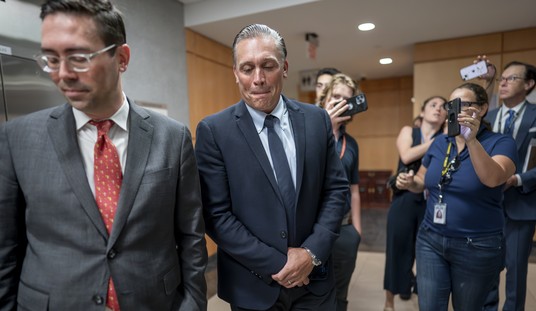Until we entered the Great Recession, most economists regarded Keynesian economics as a relic of the past. You could still find it discussed in some introductory textbooks. But, as University of Chicago economist John Cochrane points out, it wasn’t on the syllabus in any of the leading graduate schools.
Then came the most serious downturn since the Great Depression and something living economists had never seen before: interest rates that were near zero and in some cases negative. Keynes himself speculated that the economy could become stuck in a liquidity trap – where monetary policy is ineffective and only fiscal policy can stimulate the economy. Could that concept apply to the experience in recent years of the United States, Europe and Japan?
Enter Paul Krugman, the nation’s leading proponent of orthodox Keynesianism. As I explained at Forbes the other day, Krugman is a true reactionary. His explanation of Keynesianism is no different than the way introductory textbooks described it 50 years ago. And since he is a good writer, you would expect his columns in the New York Times to reflect a clearly presented exposition of the theory.
Ah, but there are three problems: (1) Krugman is a hater -- it’s hard for him to write a column without attacking the ethics, motivations and intelligence of those who disagree with him. (2) Krugman is a partisan – he hates Republicans even more than he hates economists who differ with him. (3) He is intellectually dishonest – perhaps more so than any other economics writer in the history of the profession.
That’s why if you put all of Krugman’s columns side by side and try to make sense of them, you won’t find a lot of sense.
Recommended
Let’s turn to the basics. In the Keynesian view of the world, government deficits are expansionary. They lead to greater overall spending in the economy. Balanced budgets and government surpluses are contractionary. They are “austerity” policies. Deficit spending, of course, can be produced by an increase in government spending or by a reduction in taxes.
So there you have it …. Ooops. Did you say tax cuts are expansionary? Yes. Tax cuts. In the Keynesian model a tax cut puts more money in the hands of people and when they spend it aggregate demand increases. There are no direct supply side effects in the model. Tax cuts don’t get people to work more or save more or invest more. But they do get people to spend more.
You would never know any of this reading Paul Krugman’s New York Times columns, however. That’s not surprising. Virtually every Republican candidate for president is endorsing unpaid-for tax cuts. Large ones. If you go by the Keynesian playbook, any of these plans would cause the economy to roar forth. Somehow Krugman forgot to mention that in yesterday’s column, attacking the Republican candidate’s tax proposals.
Krugman has two favorite topics: austerity and Republican tax cuts. But when writing about one, he never mentions the other. In fact, when Krugman rails against tax cuts, he removes his Keynesian hat completely. It’s as though he is a Keynesian only when it fits his partisan purposes.
Lately, both at his blog and in his columns and espeicallly in yesterday’s column, Krugman has touted the fact that the repeal of the Bush tax cuts at the end of 2012 were followed by “the best job growth since the 1990s.” In other words, taxes went up and the economy hardly noticed.
The casual reader would never know that at the time of the 2012 budget agreement Krugman predicted that the economy would be thrown into a double dip recession. He even went so far as to claim that 2013 would be a test of “market monetarism” (see below) versus the Keynesian view of the world. As we’ve already noted, Krugman was as wrong as he could be. And more than one “liberal” economist has pointed that out.
[I can remember only one other occasion when an economist so completely put his reputation on the line with a prediction in advance of a policy change. In 1968 Lyndon Johnson asked for and Congress passed a 10% surtax on personal income in order to restrain inflation. Milton Friedman publicly predicted the surtax would have no effect. Unlike Krugman, Freidman’s prediction was correct.]
What about the other side of federal deficits: government spending. Krugman frequently advocates more spending on infrastructure and perhaps the need is there. But as a tool to regulate the economy, government investment in infrastructure is as far away from fine tuning as it gets. As the Wall Street Journalpoints out:
In 2009 the Obama administration dropped $800 billion of taxpayer cash known as the stimulus package, but as of last year a piddling $30 billion had been spent on transportation infrastructure. One reason the projects proved not as “shovel ready” as promised is that proposals must undergo extensive environmental and permitting reviews … [taking an] average six years for a major highway project to be approved.
So if fiscal policy doesn’t work, what’s left? Monetary policy. The leader of a new school of thought called “market monetarism” is Scott Sumner – arguably the intellectual heir to Milton Friedman in this realm. Sumner sees the business cycle as the dance of the dollar. He argues (convincingly in my opinion) that tight money caused the Great Recession and that a more expansive monetary policy is the surest way to return to faster growth.

























Join the conversation as a VIP Member